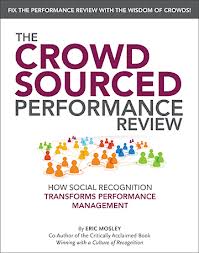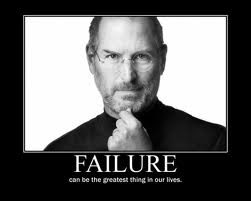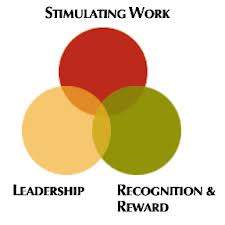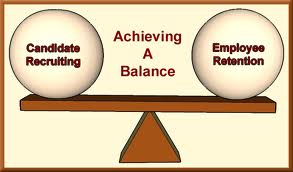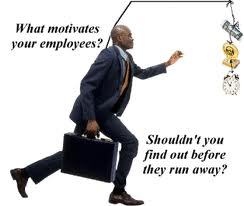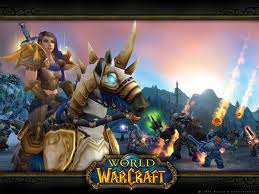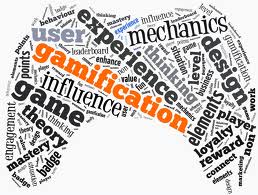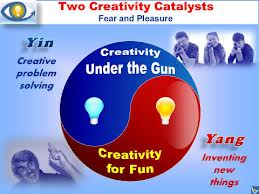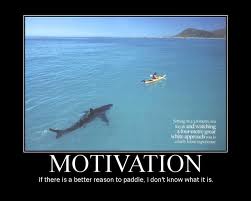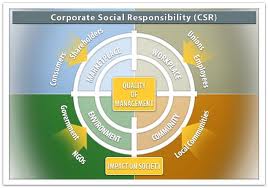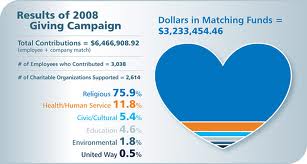Category Archives: Extrinsic Rewards
Introduce Culture into Product Development
Posted by Hindol Datta
All products go through a life-cycle. However, the genius of an organization lies in how to manage the life-cycle of the product and extend it as necessary to serve the customers. Thus, it is not merely the wizardry in technology and manufacturing that determine the ultimate longevity of the product in the market and the mind share of the customer. The product has to respond to the diversity of demands determined by disposable income, demographics, geography, etc. In business school speak, we say that this is part of market segmentation coupled with the appropriate marketing message. However, there is not an explicit strategy formulated around identifying
- Corporate Culture
- Extended Culture
To achieve success, firms increasingly must develop products by leveraging ad coordinating broad creative capabilities and resources, which often are diffused across geographical and cultural boundaries. But what we have to explore is a lot more than that from the incipient stages that a product has imagined: How do we instill unique corporate DNA into the product that immediately marks the product with a corporate signature? In addition, how do we built out a product that is tenable across the farthest reaches of geography and cultural diversity?
Thus, an innovative approach is called for in product development … particularly, in a global context. The approach entails getting cross-disciplinary teams in liberal arts, science, business, etc. to work together to gather deeper insights into the cultural strains that drive decisions in various markets. To reiterate, there is no one particular function that is paramount: all of them have to work and improvise together while ensuring that there are channels that gather feedback. The cross disciplinary team and the institutionalization of a feedback mechanism that can be quickly acted upon are the key parameters to ensure that the right product is in the market and that it will be extended accordingly to the chatter of the crowds.
Having said that, this is hardly news! A lot of companies are well on their way to instill these factors into product design and development. Companies have created organizational architectures in the corporate structure in a manner that culturally appropriate products are developed and maintained in dispersed local markets. However, in most instances, we have also seen that the way they view this is to have local managers run the show, with the presumption that these “culturally appropriate” products will make good in those markets. But along the way, the piece that dissembles over time on account of creating the local flavor is that the product may not mirror the culture that the corporate group wants to instill. If these two are not aptly managed and balanced, islands of conflict will be created. Thus, my contention is that a top-down value mandate ought to set the appropriate parameters inside which the hotbed of collaborative activity would take place for product design and development in various markets.
Thus the necessary top down value systems that would bring culture into products would be:
- Open areas for employees to express their thoughts and ideas
- Diversity of people with different skill sets in product teams will contribute to product development
- Encouraging internal and external speakers to expound upon the product touch points in the community.
- Empowerment and recognition systems.
- Proper formulation of monetary incentives to inspire and maintain focus.
Posted in Corporate Social Responsibility, Employee Engagement, Employee retention, Extrinsic Rewards, Innovation, Intrinsic Rewards, Leadership, Learning Organization, Learning Process, Organization Architecture, Product Design, Recognition, Rewards
Tags: conversation, creativity, diversity, employee engagement, extrinsic motivation, innovation, intrinsic motivation, product design, product development, talent management, value
Why Jugglestars? How will this benefit you?
Posted by Hindol Datta
Consider this. Your professional career is a series of projects. Employers look for accountability and performance, and they measure you by how you fare on your projects. Everything else, for the most part, is white noise. The projects you work on establish your skill set and before long – your career trajectory. However, all the great stuff that you have done at work is for the most part hidden from other people in your company or your professional colleagues. You may get a recommendation on LinkedIn, which is fairly high-level, or you may receive endorsements for your skills, which is awesome. But the Endorsements on LinkedIn seem a little random, don’t they? Wouldn’t it be just awesome to recognize, or be recognized by, your colleagues for projects that you have worked on. We are sure that there are projects that you have worked on that involves third-party vendors, consultants, service providers, clients, etc. – well, now you have a forum to send and receive recognition, in a beautiful form factor, that you can choose to display across your networks.
Imagine an employee review. You must have spent some time thinking through all the great stuff that you have done that you want to attach to your review form. And you may have, in your haste, forgotten some of the great stuff that you have done and been recognized for informally. So how cool would it be to print or email all the projects that you’ve worked on and the recognition you’ve received to your manager? How cool would it be to send all the people that you have recognized for their phenomenal work? For in the act of participating in the recognition ecosystem that our application provides you – you are an engaged and prized employee that any company would want to retain, nurture and develop.
Now imagine you are looking for a job. You have a resume. That is nice. And then the potential employer or recruiter is redirected to your professional networks and they have a glimpse of your recommendations and skill sets. That is nice too! But seriously…wouldn’t it be better for the hiring manager or recruiter to have a deeper insight into some of the projects that you have done and the recognition that you have received? Wouldn’t it be nice for them to see how active you are in recognizing great work of your other colleagues and project co-workers? Now they would have a more comprehensive idea of who you are and what makes you tick.
We help you build your professional brand and convey your accomplishments. That translates into greater internal development opportunities in your company, promotion, increase in pay, and it also makes you more marketable. We help you connect to high-achievers and forever manage your digital portfolio of achievements that can, at your request, exist in an open environment. JuggleStars.com is a great career management tool.
Check out www.jugglestars.com
.
Posted in Employee Engagement, Employee retention, Extrinsic Rewards, Innovation, Intrinsic Rewards, Leadership, Learning Organization, Learning Process, Motivation, Organization Architecture, Recognition, Rewards, Social Dynamics, Social Network, Social Systems, Talent Management
Tags: communication channel, conversation, crowdsource, employee engagement, employee recognition, extrinsic motivation, intrinsic motivation, learning organization, mass psychology, social network, social systems, talent management
JuggleStars launched! Great Application for Employee Recognition.
Posted by Hindol Datta
About JuggleStars www.jugglestars.com
Please support Jugglestars. This is an Alpha Release. Use the application in your organization. The Jugglestars team will be adding in more features over the next few months. Give them your feedback. They are an awesome team with great ideas. Please click on www.jugglestars.com and you can open an account, go to Account Settings and setup your profile and then you are pretty much ready to go to recognize your team and your colleagues at a project level.
Posted in Corporate Social Responsibility, Employee Engagement, Extrinsic Rewards, Gamification, Innovation, Intrinsic Rewards, Leadership, Learning Organization, Recognition, Rewards, Social Causes, Social Network, Social Systems, Talent Management
Tags: communication channel, connection, conversation, employee engagement, employee recognition, extrinsic motivation, intrinsic motivation, learning organization, organization architecture, social network, social systems, talent management, value management
Reality Distortion Field: A Powerful Motivator in Organizations!
Posted by Hindol Datta
“The reality distortion field was a confounding mélange of a charismatic rhetorical style, an indomitable will, and an eagerness to bend any fact to fit the purpose at hand. If one line of argument failed to persuade, he would deftly switch to another. Sometimes, he would throw you off balance by suddenly adopting your position as his own, without acknowledging that he ever thought differently. “
– Andy Hertzfield on Steve Jobs’ Reality Distortion Field.
Many of us have heard the word – Reality Distortion Field. The term has been attributed to Steve Jobs who was widely known to have communicated messages to his constituency in a manner such that the reality of the situation was supplanted by him packaging the message so that people would take the bait and pursue paths that would, upon closer investigation, be dissonant from reality. But having been an avid acolyte of Jobs, I would imagine that he himself would be disturbed and unsettled by the label. Since when did the promise of a radiant future constitute a Reality Distortion Field? Since when did the ability of a person to embrace what seemingly is impossible and far-fetched and instill confidence in the troops to achieve it constitute a Reality Distortion Field? Since when did the ability of leadership to share in the wonders of unique and disruptive creations constitute a Reality Distortion Field? Since when did dreams of a better future underpinned with executable actions to achieve it constitute a Reality Distortion Field?
The Reality Distortion Field usage reflects the dissonance between what is and what needs to be. It is a slapstick term which suggests that you are envisioning tectonic dissonance rifts between reality and possibilities and that you are leading the awestruck starry-eyed followers off a potential cliff. Some people have renamed RDF as hype of Bulls*#t. They believe that RDF is extremely bad for organizations because it pushes the people outside the comfort zone of physical and logical constraints and is a recipe for disaster. The argument continues that organizations that are grounded upon the construct of reality and to communicate the same are essential to advance the organization. I beg to differ.
So let me address this on two fronts: RDF label and if we truly accept what RDF means … then my position is that it is the single most important attribute that a strong leader ought to embrace in the organization.
The RDF label:
We all know this to be true: A rose by any other name is still a rose. We just happen to call this rose in this context a RDF. It is presumed to be the ability of a person to cast possibilities in a different light … so much so that the impossibilities are reduced to elements just within the grasp of reality. Now I ask you – What is wrong with that? For a leader to be able to cast their vision within the inimitable grasp of an organization is a huge proxy for the faith of the leader of the people in the organization. If a project realistically would take 3 months but a RDF is cast to get a project done in 15 days – that is a tall order – but think of the consequences if people are “seduced” into the RDF and hence acts upon it. It immediately unfolds new pathways of collaboration, unforeseen discoveries into super-efficient and effective methods, it creates trench camaraderie, it distills focus into singularity points to be executed against, it instills and ignites a passion and an engagement around the new stakes in the ground, people become keepers of one another for a consequential and significant conquest, it brings out the creative energies and the limitless possibilities, once the goal is accomplished, of disruptive innovation in means and ends. Of course, one could also counter-argue a plethora of incidental issues in such cases: employees would burn out under the burden of unrealistic goals, employees are set more for failing than succeeding, it would create a disorderly orientation upon groups working together to meet RDF standards, and if one were to fall short …it would be a last straw that may break the camel’s back. So essentially this speaks to the ordinal magnitude of the RDF schema that is being pushed out by leadership.
RDF and the beneficial impact to an organization:
It is the sine qua non of great leadership to be able to push organizations beyond the boundaries of plain convenience. I have, in my career, been fortunate to have been challenged and on many occasions, forced out of my comfort zone. But in having done so successfully on many occasions, it has also given me the confidence to scale mountains. And that confidence is a perquisite that the organization leadership has to provide on a daily basis. After all, one of the biggest assets that an employee in an organization ought to have is pride and sense of accomplishment to their work. RDF unfolds that possibility.
We hear of disruptive innovations. These are defined as innovations that leapfrog the bounds of technology inertia. How does a company enable that? It is certainly not incremental thinking. It is a vision that marginally lies outside our aggregated horizon of sight. The age today which is a result of path breaking ideas and execution have been a result of those visionaries that have aimed beyond the horizons, instilled faith amongst the line men to align and execute, and made the impossible possible. We ought to thank our stars for having leaders that emit an RDF and lead us off our tenebrous existence in our diurnal professional lives.
There is absolutely no doubt that such leadership would create resistance and fierce antipathy among some. But despite some of the ill effects, the vector that drives great innovations lies in the capacity of the organization to embrace degrees of RDF to hasten and make the organizations competitive, distinctive and powerful.
Posted in Chaos, Employee Engagement, Extrinsic Rewards, Innovation, Intrinsic Rewards, Leadership, Learning Organization, Learning Process, Motivation, Order, Organization Architecture, Vision
Tags: boundaries, communication channel, creativity, discipline, extrinsic motivation, focus, innovation, intrinsic motivation, learning organization, meaning, organization architecture, strategy, vision
Nice Infographic by Salesforce on Employee Motivation
Posted by Hindol Datta
Posted in Employee Engagement, Employee retention, Extrinsic Rewards, Intrinsic Rewards, Learning Organization, Motivation, Organization Architecture, Recognition, Rewards, Talent Management
Tags: employee engagement, employee recognition, extrinsic motivation, intrinsic motivation, learning organization, organization architecture, rewads, rewards, talent management
Economics of Employee Retention
Posted by Hindol Datta
It is a common fact that employee turnover in a company has significant cost consequences. HR departments and managers deploy programs to create great work environments to prevent employee turnover. Some industries have higher turnover than others. However, despite the expected high turnover rate, companies are realizing that the acquisition cost of getting a new employee to replace someone who has left is meaningfully higher.
There are a number of tangible and intangible costs that have been connected to employee turnover:
- Pre-departure costs—such as the reduced productivity of an employee who is discontented and using company time to look for another job, plus the costs of any efforts to retain the employee once he or she has announced his intent to leave.
- Termination costs—those related to termination of employment, including exit interviews, security precautions, pay calculations, and other recordkeeping costs, plus the unemployment tax impact and payments for severance, accrued vacation time, retirement plan contributions, and any extension to benefits.
- Recruitment costs—related to advertising, recruiting, interviewing, pre-employment evaluations, security and background checks, hiring bonuses, relocation, etc.
- Training costs—the cost of training new employees in necessary job skills can be significant.
- Productivity costs—related to new workers, who are generally less productive, require more supervision, and contribute less to customer satisfaction.
- Vacancy costs—lost sales or lost productivity while the position remains vacant, plus the cost of overtime or temporary help to cover fill in.
- Corporate culture – high turnover is a reflection of corporate culture. If potential candidate become aware of high turnover, this could further increase the corporate’s acquisition costs.
It has been estimated that the cost of employee turnover could range anywhere from 50% of the employee’s salary up to 500% of the employee’s salary.
Employee turnover= (Number of separations per year/ Average number of employees per year)*100
The general median is 130%. Here is a specific scenario to think through:
Assume there are 100 employees in an organization. The average compensation is $50K per year. The employee turnover rate is 10%. That means about 10 employees leave the company in any given year. If the average cost is $50K per year, and the median is 130% or 1.3X compensation cost, then the total impact in this scenario would be $650,000. Thus, it represents almost 13% of the run rate of payroll. If there are programs that could stem the flow out by 50%, that would save $325,000 which represents 6.5% of payroll. This is a fairly significant statistic. And since 130% is a median across all industries, I contend that knowledge industries have a higher median than industries that are driven by low or medium skilled workers at the lower end of the pay scale.
So what are some of the ways that would minimize this turnover? First, whatever the turnover number, the company would want to compare themselves to similar organizations in the specific industry or region. In fact, some turnover may be healthy to the company. Second, one single program may not be good enough. They have to consider multiple programs that could be deployed concurrently or over time.
So, companies seeking a performance-oriented approach to employee retention might seek to enhance work value in some of the following ways (courtesy of the Performance Improvement Council of the Incentive Marketing Association):
Employee involvement in job design, goal setting, and selection of rewards.
Clear communication about company goals and ways employees can contribute to and share in its success.
Incentive programs that reward people for significant and measurable performance improvements.
Recognition programs offering meaningful recognition to employees for both tangible and intangible contributions to their company.
Project-oriented approaches in which all employees can work on diverse, limited-term assignments rather than being sequestered within a single department or function.
Developing talent exchanges to enhance careers by connecting employees with appropriate projects, roles, and positions within their companies.
Training through coordinated programs designed to enhance employee knowledge and then rewarding employees for that increased knowledge. Consider cross training to enhance skills and improve productivity. This both satisfies employees and equips them to perform better.
Fostering feelings of support by setting clear goals for employees and rewarding them upon accomplishment, and by promoting consistent values and recognizing people who embody them. This directs retention resources to actions and values that have a measurable benefit to the organization.
Creating an atmosphere of fun with spot “atta-boy” rewards, contests, or meetings, specifically related to organizational goals and values. This creates an atmosphere conducive to retention while keeping the focus on achieving goals.
Addressing the measurement issue by instituting “real-time” goal setting, performance measurement, and skills development programs to ensure that people always know where they stand, and to address performance issues and skill gaps before they become problems.
Fair Compensation. No one said that compensation will have no effect on turnover and retention. Determine a fair wage in your labor market and do what you can to meet it. A fair and equitable wage and benefits package is the foundation for a successful employee retention program.
Build trust. As mentioned above, a “climate of trust” is one of the factors that influence employee retention. Trust is built with employees through fair working conditions, management responsiveness to employee concerns, realistic performance expectations, and open communication, including one-on-one communications between managers and employees whenever possible.
Don’t limit motivation efforts to star employees. Incentive, reward, and recognition programs should be expanded to include as many employees as possible, rather than just the top 5 or 10 percent. Remember, it is the large middle range of employees that can contribute the most in terms of improved productivity and lower turnover costs.
The Role of Motivation
Higher levels of motivation can translate into a 53 percent reduction in employee turnover, according to a recent study by Stephen Condly, associate professor at the University of Central Florida, Orlando, conducted for the SITE Foundation. No retention strategy can succeed without addressing the issue of employee motivation.
“Incentives, Motivation, and Workplace Performance,” a study conducted by the professors at the University of Southern California for the International Society of Performance Improvement, found the following factors critical to fostering motivation and loyalty.
- Work value. The research confirmed that people stay motivated when they value their work, no matter how mundane the task. Someone building a house for low-income tenants might get pleasure from the most arduous labor, knowing the good that can come from the effort. Organizations can foster work value by recognizing contributions in a meaningful way, and regularly communicating the organizational goals toward which each employee can contribute. They can add to satisfaction through use of incentive programs that set goals for quality or quantity, and reward those who achieve or surpass them.
- Training. Many people draw satisfaction from developing the capability to do their jobs better or acquiring additional skills or responsibility.
- Support. Most people gain satisfaction from knowing that their organization appreciates their effort. This often comes in the form of meaningful recognition to those who achieve their goals or who exemplify important organizational values.
- Emotional appeal. Yes, people work better when they feel happy. Properly structured incentive and recognition programs can foster an atmosphere of fun and excitement, even in dreary jobs.
- Measurement. Knowing how one is doing in the pursuit of a goal is another way to create satisfaction. Effective measures of quality and productivity keep employees focused on goals, especially if accompanied with proper recognition when they succeed.
Posted in Employee Engagement, Employee retention, Extrinsic Rewards, Intrinsic Rewards, Leadership, Learning Organization, Organization Architecture, Recognition, Rewards, Social Dynamics, Talent Management
Tags: employee engagement, employee recognition, employee retention, extrinsic motivation, intrinsic motivation, learning organization, organization architecture, rewads, social systems, talent management, value management
Applying Gamification in the Workplace
Posted by Hindol Datta
Wikipedia defines gamification as the use of game mechanics and game design techniques in non-game contexts. It applies to non-game applications and processes, in order to encourage people to adopt them, or to influence how they are used. It makes technology use more exciting and engaging, and encourages users to engage in desired behaviors with fruitful consequences to the environment where these techniques and processes are being deployed.
Many years ago, I took a series of courses at Cal Tech in Pasadena at the School of Industrial Relations. One of the courses was applying tools to encourage teamwork and participation. Thereafter, I have attended field trips in organizations in strategic off-sites where we had to do rope walking, free fall, climbing bamboo structures strung together to retrieve flags, etc. Thus, in those days – we applied sports and board games to fuel a shared success environment. Now things have become more technology oriented, and we have thus seamlessly transitioned to some extent from those environments to consumer web based experiences. This does not suggest that the other alternatives are less rewarding; they draw upon other types of triggers but gamification through technology is more accessible and generally less expensive with less overhead in the long run.
What are the four key elements in Gamification?
Games generally tend to have four elements that are closely intertwined. Absent any of these four elements and the jury would be out on whether the application could suitably be considered gamified. Clearly, when these elements are being applied to non-gaming contexts, you will find that some of these elements are more watered down or cruder representation of game design principles or applications to actual game play environments. Regardless, all of these elements are necessary conditions that must come into play.
1.Narratives
Games have narratives. They must be able to tell a story. They must place the player or user in a context, make them aware of the context, create a temporal dimension of a past, present and future and provide a theme or a set of themes that the players pursue.
2.Game Mechanics
These constitute the provision of tools and use cases that create PvP (Player vs. Player) or PvE (Player vs. Environment) experience. Common tools like teleporting, cockpit load (number of player controls), in-game user interaction, human-computer interaction, etc. come into play. The mechanics must aptly support the narrative.
3.Aesthetics
People look for rich experiences. In MMORPG, the aesthetics are extremely rich and immersive. In gamified applications, it need not be so. Regardless, users have continued to raise the bar on aesthetics and richness of media to support their interaction. So the trend toward aesthetics will continue, albeit at a lower benchmark than would be in the extreme case of a high quality MMORPG game.
4.Rewards
Finally, games have to have a purpose. The narratives have to have a light at the end of the tunnel. There is a carrot and stick principle in game design. It is a very important component to either persuade people to behave or not behave in a certain manner. Rewards are vanity points awarded for achieving goals that are user-driven or context driven. Either way, it is and will continue to remain the key element in game design.
The myth of rewards!
In one my earlier blogs, I laid out the distinction between intrinsic and extrinsic motivation. This has bearing on the concept of rewards and recognition in the workplace. You can find the details in my blog – “Intrinsic and Extrinsic Motivation: Impact on Employee Engagement”. (https://linkedstarsblog.com/2012/10/16/intrinsic-and-extrinsic-motivation-impact-on-employee-engagement/
Designing an application with rewards to fuel engagement in the workplace is a good idea. But rewards have to follow a narrative, a storyline. For example, an application that simply awards points and badges based on transactions without a narrative cannot be considered an application that applies all of the elements of the gamification process. It only addresses one element, and in fact, for some it is the least important component. When one focuses the product design around this single component, I contend that you are not really gamifying; you are in fact drawing upon some temporary impulses that are not sustainable and enduring.
Hence, the narrative and craftsmanship is quite critical to gamifying an application and making it relevant for employees in the workplace.
One must adopt the right mix of the gaming elements to ultimately create ends such as stickiness, re-engagement, and deeper levels of interaction, fun, challenge, promoting options to cooperate and also compete, and broadcast success.
Scales:
So now we arrive at assessing the scales to benchmark each of those ends. I am being particular by not calling these tools, since tools are to support mechanics whereas scales are manifestations of an end result. For practical design and implementation purposes, here are a few scales that are common across all games, some of which are quite relevant for gamification in an employee setting. Some of the more common scales to assess or broadcast success are:
1) Leaderboards
2) Achievement levels and measures of achievements
3) Challenges between users
4) Progress Bars
5) Reward Points that have redemption value
To reiterate, for the final outcomes associated with the scales to be meaningful, the narrative is extremely important. Storyboarding the experience in various settings is the key to designing relevant gamified applications. In fact, applying the appropriate narratives concerning particular industries is a very interesting architectural initiative that can be pursued.
Thus, in the case of workplace engagement, if the nuances of the work and the industry were emulated around themes with contextual narratives, it would truly make for wonderful experiences that ignite employee engagement while furthering corporate objectives.
Posted in Employee Engagement, Extrinsic Rewards, Gamification, Intrinsic Rewards, Product Design, Recognition, Rewards, Social Dynamics, Social Gaming
Tags: employee engagement, extrinsic motivation, game design, gamification, innovation, intrinsic motivation, leaderboards, product design, relevance, social network, social systems
Intrinsic and Extrinsic Motivation: Impact on Employee Engagement
Posted by Hindol Datta
The difference between intrinsic and extrinsic motivation lays the groundwork to reflect the qualitative dimension of motivation. The distinction is critical, in that – understanding it would serve the purpose of laying out the appropriate organizational architecture that would encourage the proper motivation that would drive employee engagement.
Intrinsic motivation reflects an engagement in activities that are performed with the sole end being satisfaction. An intrinsically motivated employee would do things simply for the sheer joy of doing things and assessing results. Tangible rewards or any rewards per se are not the ends that they drive toward. On the other hand, an extrinsically motivated employee is driven by tangible rewards – money, gifts, social approval; or they are driven specifically to avoid punishments – getting fired, rejection, being passed over for an important project, and career limiting responses.
Thus, in both instances, the theory was fairly mechanistic and behavioral. In fact, even intrinsically motivated employees can be framed in a mechanistic and behavioral world wherein the cause and effect relationship is an act and the joy of seeing a result. The only difference is that they are not connected to influences from without. But what has become a fact is that if the organization provides the appropriate structure to allow employees to ignite their intrinsic drives, the organization will benefit more than the alternative framework. This does not mean that one has to do without the other; it does mean though that depending on the nature of the work and the stage of the company – either or both motivation archetypes can be activated which will elicit the right engagement to advance the cause of the company. The questions though remain – What, When and How?
What? The culture has to address deficiency needs. These constitute the needs like security in the job, reasonable pay, and opportunities for growth, promotions, recognition, etc. Deploying a structure that only satisfies the intrinsic inclinations will be less likely to succeed if the deficiency needs are not clearly addressed. This would mean that good organizations would embark and deploy programs to address and mitigate deficiency needs. However, all that the organization has provided upon successful deployment is a sense of shared relief. But the organization needs to up their ante to allow for “growth needs” which is the manifestation of the intrinsic metric. That would mean to dive deeper on a case by case basis and as a group to deploy programs that fuel aspirational and idealistic goals of the employees. A great example that I immediately recall is the 3M model or the Google model wherein employees are given time to do their own thing on company time! Now this is obviously not practical for all companies, but certainly there is and will be some points that organizations can deploy to fuel “voluntary” engagement.
When? Timing is important. An organization can set a directional tone, but when to deploy what is driven by a host of discrete or related factors – for example, rush to go-to-market, liquidity crisis, major software pushes, declaring and preparing for earnings’ release, etc. When the organization is being driven on account of all these factors and more to ensure their survival, they do not have the degree of freedom necessarily to deploy the programs that promote “growth needs”. In fact, some organizations in a hyper-competitive environment may always feel as if they are in a pressure cooker and thus cascade that pressure across the ranks and files of the company. In the extreme case, if the organization is better insulated from the trials and tribulations of external factors, they would have a greater degree of freedom to nurture the “growth needs”. Now the latter scenario is very important to understand since today we belong in the information age rather than the mechanistic industrial age. In fact, we are being ushered at a break neck pace into an age where insight gathered against information is the salient competitive distinction — the morass of data and information is fast becoming now a millstone around an organization’s neck. So to success in the Age of Insights, so to speak, the company MUST deploy programs that anticipate and nurture the “growth needs”. The case for it is amplified further by the simple fact that people are mobile and have more and more choices. Hence, the Best Place to Work is an important metric that companies and employees follow since these companies have provided the right mix. To reiterate, timing the programs is important but the fact that both programs must be deployed to ensure an engaged culture is less debatable.
How? This is the penultimate question. Once the organization have assessed what is need and when, they have to execute. How do we establish a balanced set of programs that would fuel the appropriate level of engagement that will positively impact the organization? Conversely, how do we untether from legacy programs that were good for a particular set of circumstances, but may not be good going forward. This probably comes more in the realm of organizational psychologists but here are a few takeaways. First, employees have to be given free choice – in other words, given other alternatives, they would choose to do that alternative that optimizes and increases the value of the company the most. A fine example would be co-founders banging away at their work 24X7 and fuelled by dreams and possibilities for their creation. Put on a spotlight on this behavior – Multiply this behavior a hundred fold to characterize mass group psychology, and then figure out what can be done to create a “permanent immanence” or the state of continuous excitement and engagement. What we know based on studies, that engagement arising out of intrinsic motivation results in creativity, well-being, cognitive flexibility, loyalty, etc. By comparison, we also know that engagement as a result of extrinsic motivation may be as good – or depending on your perspective, may be as bad as a sugar high. Engagement ceases immediately or slowly once the extrinsic motivator is removed. In fact, a more extreme version suggests that introduced extrinsic motivation programs that serve “dependency needs” may actually depress engagement even lower than the original state.
So the general consensus appears to be to introduce not a plan but a surprise. For example, rewards that are expected, contingent on engagement or on task completion, and tangible are more likely to be detrimental to intrinsic motivation than rewards that are unexpected, not contingent, and intangible. More studies have in fact shown that employers should pursue the internalization of an employees’ extrinsic motivation for these tasks. Thus commending employees with unplanned surprises coupled with surfacing the value of the activity in and out of the organization appeals to the individual’s innate sense of worth to the company and outside of it. Hence, recognition at deeper granularity that is served with an element of surprise in an open environment is one of the better programs that ignite employee engagement.
Posted in Employee Engagement, Extrinsic Rewards, Innovation, Intrinsic Rewards, Learning Organization, Organization Architecture, Recognition, Rewards, Social Dynamics, Talent Management
Tags: behavioral psychology, choice, creativity, employee engagement, extrinsic motivation, fear, happiness, intrinsic motivation, learning organization, mass psychology, motivator, organization architecture, organizational psychology, program deployment, social psychology, talent management, value management
Employee Engagement and Corporate Social Responsibility
Posted by Hindol Datta
We start off with the premise – Human beings are good. Absent any constraints, human beings are inclined toward doing good. It is a fair assumption that have stood the test of time and the institutions, at an aggregate level, have for the most part endured and advanced human prosperity and happiness on account of the fundamental premise.
As we continue to thrive and move forward and forge and foray into new branches of knowledge and gather insights into our worlds, internal and external, we have a little more headroom to reach out and engage and contribute to the well being of other people that may not serve any immediate vested interest. Along the way, people have gathered a mix of different capital of various magnitudes – economic capital, intellectual capital, and social or reputation capital – and hence, they are in a better position today, than any time before, to be able sprinkle this capital across local and non-local communities. Thus, economic capital may translate into micro-lending and charity and endowments, intellectual capital may translate into voluntary time associated with teaching and mentorship, and social or reputation capital may translate into giving people opportunities. There is a far greater degree of awareness of larger issues that impinges on the advancement of the human race … issues around environment, conservation, global sustainability, clean energy, medical, basic infrastructure matters, democratic values, food, et al. And to that end, NGO’s, foundations, wealthy donors, corporations, governments, taxpayers, et al have contributed immensely to all of these causes.
Sometime ago I read this article – The Case against Corporate Social Responsibility in the WSJ. (http://online.wsj.com/article/SB10001424052748703338004575230112664504890.html)
The argument was that if corporations ought not to focus on profits and social responsibility since those are competing outcomes that dip into a shared pot of responsibility of enhancing shareholders’ wealth. Yes, the argument has some merit if we were to reduce this argument to fiat consideration. But given the increased awareness of people in a world that is globalized and is under a spotlight of rich social media, this argument carries less weight today than more early years in business history. Talent has indeed become a prized asset, and companies set up structures, with the profit motive in mind, to harness the asset in a needful manner – all to finally serve the interests of the shareholder. But talent has also become fickle and mobile; it is becoming relatively more difficult to handcuff talent to the steering wheel of an organization. The organization is thus, for the sake of long-term sustainability, have to create structures that will encourage loyalty and engagement among the employees. And thus, the organization has to espouse higher aspirational ideals, which may immediately sacrifice short term profits for long term sustainability. I contend that corporate social responsibility is becoming another factor that will increase in importance over the passage of time.
So how do the flow of such events and the presumption of good tie into employee engagement? To stretch the above argument further, it is important for company to provide a supportive framework to allow employees to distribute their capital, should they choose to do so! I am not suggesting that people must distribute the capital, but I am suggesting that they have the opportunity to do so. And when they do, they aptly get recognized because it is still a capital that is being distributed generally with no expectation of immediate return. The returns maybe illusory with respect to formulating tangible financial metrics, but nonetheless it has a lot of importance. Thus, it is important that there are channels and applications and systems in place to encourage social good within the ranks and files of the employees.
Here are some interesting facts that you ought to think through. And these are facts in the context of US only:
1. There are over 1million charities and foundations.
2. The total amount of revenue associated with these charities and foundations are over $1.5 trillion.
3. Almost 50% of the amount is driven by private donations, of which $300 billion are private individual contributions. Private donations represent estates, bequests, etc.
4. There are over 20 million people employed in charity and foundations in the US.
So clearly this is a big and powerful sector. And if companies can provide the structure to support the cause of community engagement among employees, that would only mean that they magnify their community footprint, and hence will have access to the new millennial generation that transcends the extrinsic provisions of the employer-employee contract.
Posted in Charity, Corporate Social Responsibility, Employee Engagement, Extrinsic Rewards, Intrinsic Rewards, Recognition, Rewards, Social Causes, Social Systems
Tags: corporate accountability, corporate social responsibility, employee engagement, employee recognition, extrinsic motivation, intrinsic motivation, social causes, social recognition, social systems, sustainability




